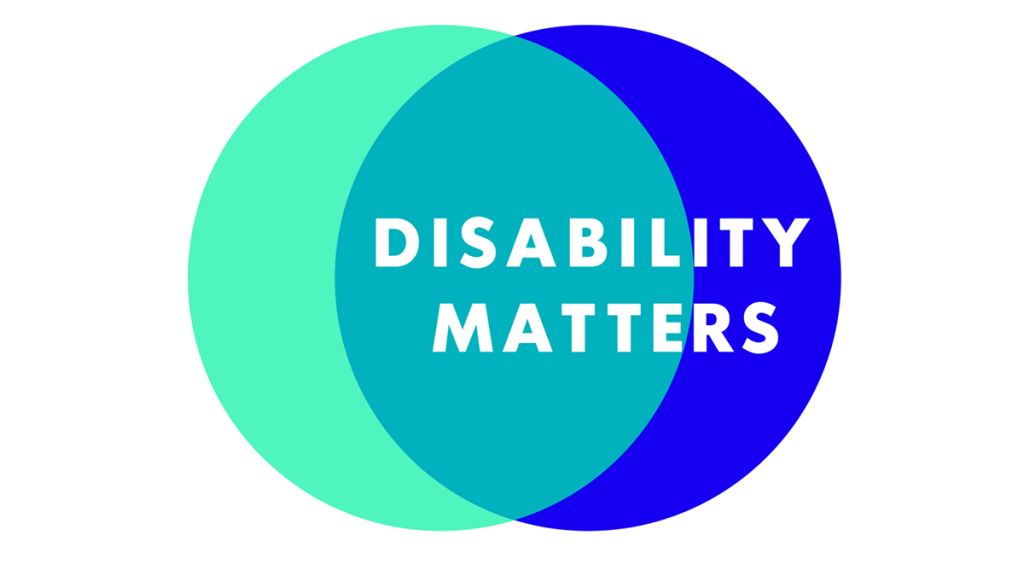
Design: Lucky Benson
It’s time to move beyond ‘inspiration porn’ and cover disability authentically and accurately
Every beat is a disability beat
Let’s make a pact: In 2022, we’ll make covering disability an essential part of our journalistic mission.
Before we can improve as an industry, we must acknowledge the harmful ways we’ve covered disability in the past. Here’s a few places to start:
Eliminate inspiration porn
It is time to ban inspiration porn from our publications — full stop. That means no more headlines about the high school athlete taking the student with Down syndrome to the prom or features about the local store that employs disabled adults.
The Australian disability activist Stella Young coined the term inspiration porn in her 2014 TEDx talk to describe these types of stories because they clearly objectify one group of people to benefit another.
While these stories often come from a good place on the part of the reporter or editor pitching and producing the story, they erase the disabled person and flatten their existence. We should want to write good news stories about people helping each other, but not if it means reinforcing negative stereotypes about disability.
Throw out the Disability Dongles
“A Disability Dongle,” the designer and consultant Liz Jackson writes, “is a well intended elegant, yet useless solution to a problem we never knew we had.”
A wheelchair that climbs stairs? Wildly expensive and impractical when disabled people want access to elevators and ramps. Sign language interpreting gloves? Useless and rudimentary considering that American Sign Language involves facial expressions and arm movements to convey meaning.
Journalists regularly fail to interrogate technological “solutions” with much rigor or skepticism. Instead we fall into a trap of framing a new invention as “innovative” and fail to ask questions about whether it is necessary or good for society. (See early coverage of Theranos or Facebook and compare that with where we are now.)
The simplest solution to avoiding elevating disability dongles? Don’t take a designer at their word. Interview disabled people about the product. They are expert sources in what will actually be useful or affordable.
Is there a new piece of infrastructure being built in your community? Ask about what accessible features are being included in the design and write about them. Do you see people with mobility aids using public transit? If not, ask why.
I recently interviewed the author Rebekah Taussig as part of a Kansas City Star project evaluating how accessible Kansas City is (spoiler: the city has room for improvement). Taussig’s memoir “Sitting Pretty” is a thoughtful look at navigating life, love and work with a disability.
“The vast majority of nondisabled people don’t see — and certainly don’t feel — the experiences of disabled folks,” she writes in the book.
In our conversation I asked Taussig what she thought her neighbors could do to make our community more accessible. Her answer was simple: Ask disabled people what would be better.
Center disabled people in your coverage
“Don’t cover disability, cover disabled people,” Amanda Morris, The New York Times’ inaugural disability fellow, said eloquently when we were discussing how best to frame this concept for other journalists.
Disabled people have thoughts, feelings, hopes, dreams and aspirations. They have romantic relationships and they have sex lives. Disabled people face challenges, struggles, setbacks and failures too. All of these are universal human experiences. They are not tied to one’s disability, but rather to their humanity.
Disabled people are actors, business owners, politicians, artists, authors and every other type of newsmaking person. It is no secret that it matters when someone sees themself represented in the media.
Journalists can make a difference in how disability is understood as part of our culture. Interviewing, photographing and featuring these people as experts in their own field, and not only because they are disabled, is the single best way to center disabled people in our coverage.
Listen to disabled people
There’s no way for individual journalists to intimately understand all the different ways that disability is experienced. The only way for us to understand is to listen and take seriously issues that the disability community raises.
If you’re regularly listening to disabled people in your community or on the internet, you’ll be able to spot inspiration porn, disability dongles and missing voices much faster.
If you’re new to disability culture (or even if you’re not), I recommend “Disability Visibility.” Edited by Alice Wong, the collection of essays gives a strong sampling of different experiences and perspectives from disabled people.
Want to add more disability culture, news and conversation to your timeline? Here are a few of my favorite people to follow on Twitter and Instagram:
- Imani Barbarin
- Keah Brown
- Alice Wong
- Rebekah Taussig
- Amanda Morris
- Sara Luterman
- Eric Michael Garcia
- Tessa Miller
—————
Have questions about disability and journalism that you’d like me to address in my research? Submit them here.
Want to stay up-to-date about my research and receive a curated collection of journalism, books, art and culture by and for the disability community? Sign up for my newsletter: Disability Matters.

Comments